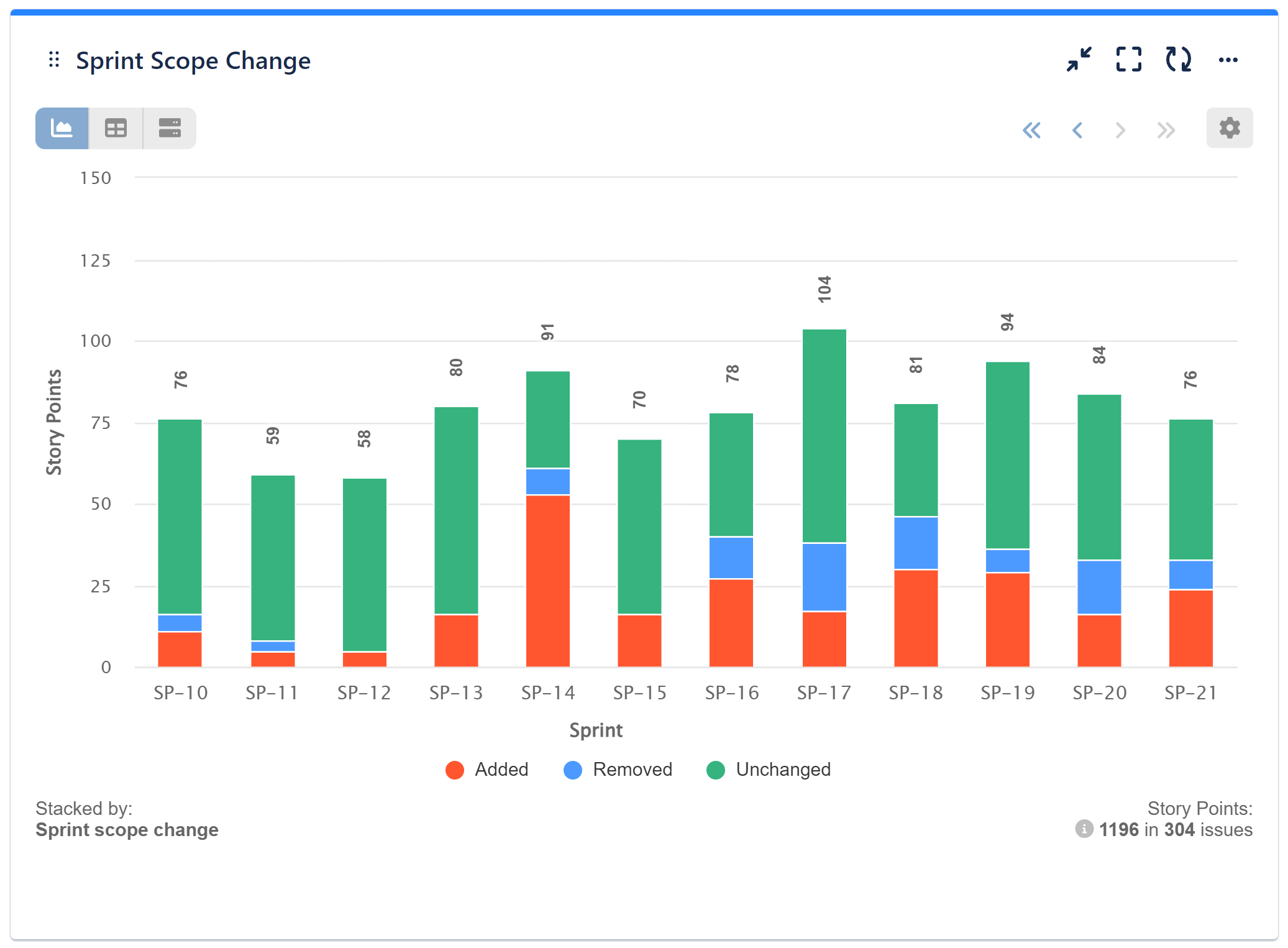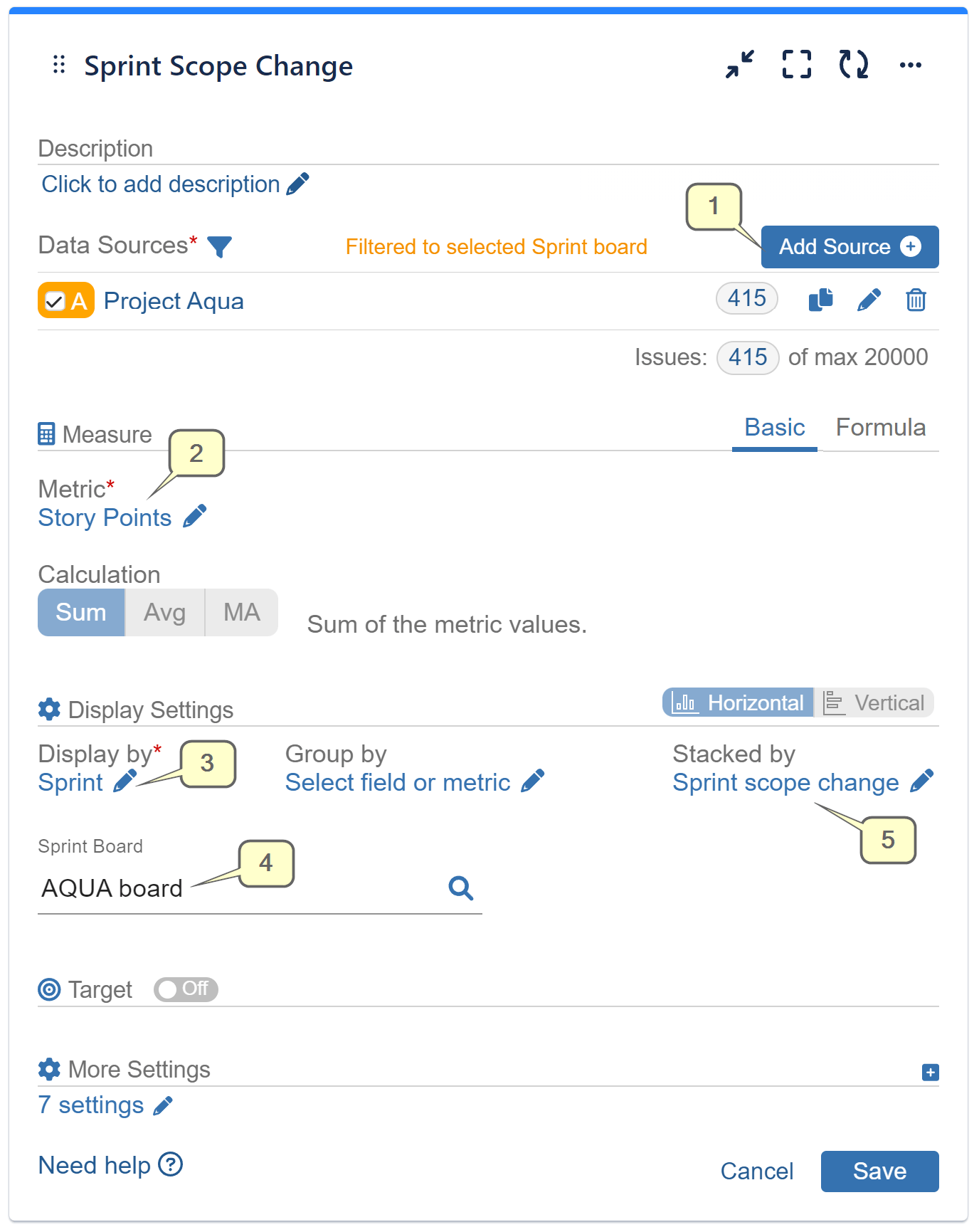By leveraging the Sprint Scope Change field supported by the Performance Objectives app, agile teams can effectively manage scope creep, maintain focus on sprint goals, analyze the impact on velocity, and continuously improve their sprint planning and execution processes. This leads to more predictable outcomes, higher productivity, and better alignment with project objectives.
Mitigating Scope Creep: Leveraging the Sprint Scope Change Report
The Sprint Scope Change Report, created using the Performance Objectives app is an invaluable tool for agile teams. This report tracks how many story points were added after the sprint started, how many were removed, and how many remained unchanged. By displaying this data on a sprint-by-sprint basis, the report provides several key benefits:
- Identifying Scope Creep: By monitoring the number of story points added after the sprint begins, teams can identify instances of scope creep, which can derail sprint goals and affect overall project timelines.
- Evaluating Sprint Goals: Understanding how many story points remained unchanged helps teams evaluate their ability to stay focused on the original sprint goals. This insight is crucial for maintaining alignment with project objectives and delivering planned outcomes.
- Analyzing Team Velocity: Tracking story points added and removed during the sprint helps teams understand the impact of scope changes on their velocity. Frequent changes can disrupt workflows and reduce productivity, while stability in scope indicates a more predictable and manageable sprint.
- Improving Planning and Forecasting: By examining scope changes on a sprint-by-sprint basis, teams can gain insights into their planning accuracy and make necessary adjustments. This helps in setting more realistic sprint goals and improving the accuracy of future sprint planning.
- Enhancing Transparency and Communication: Providing clear visibility into scope changes during each sprint helps in transparent communication with stakeholders. It ensures everyone is aware of changes and their implications, fostering trust and collaboration.

Here’s a step-by-step instruction on how to build this sprint report in Jira:

Step 1: Add a Data Source. In our example, we’ve filtered our demo project “AQUA” and disabled the date range to view all previous sprints.
Step 2: Select ‘Story Points’ metric.
Step 3: Choose ‘Sprint’ for the ‘Display by’ field.
Step 4: Select a sprint board you want to analyze.
Step 5: Stack by the ‘Sprint scope change’ field.
Here’s a step-by-step configuration video for this report:
For an overview of sprint-related metrics, fields, and reports built with the Performance Objectives app, visit these articles or explore the powerful features supported by the app in our User Guide.
Start your 30 days free trial of Performance Objectives: Charts for Jira from Atlassian Marketplace.